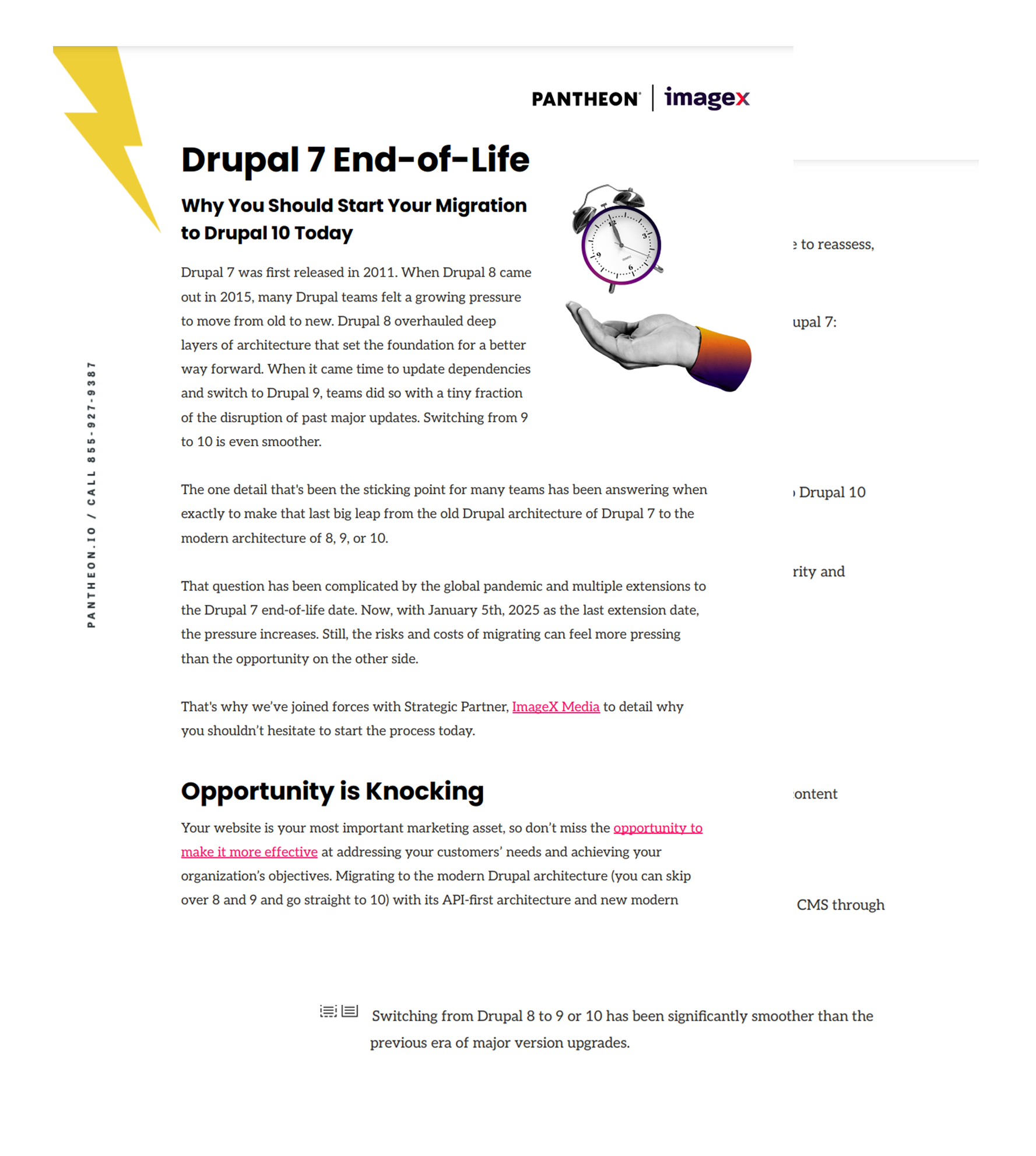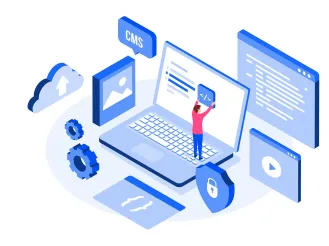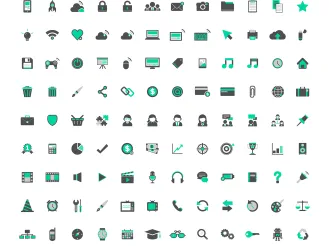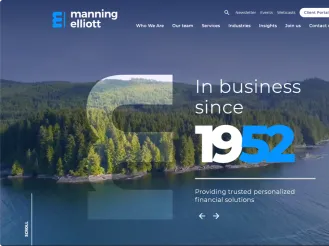Migration of content and data can be a large undertaking, complicated further when consolidating and modifying the data structure, or when rewriting content.
The approach to our Drupal migration services is structured, based on our general project methodology. Since most migration projects involve both content and feature and content migration, we focus on planning early on, reviewing the existing website as well as any changes you may be planning.
We find there is no one size fits all approach and we’d expect to adapt as we learn more about your organization and can distribute the content activities in whichever way will best serve the project.

Why You Should Consider Migrating to Drupal
Flexible Features
Drupal gives you endless functionality and allows you to grow and pivot just as quickly as the web does.
Migrating to Drupal provides access to the latest features, including a more intuitive user experience, increased accessibility, and an improved user interface.
Unmatched Security
Migration to the latest version of the Drupal platform is critical to ensure that your digital ecosystem receives security and performance updates.
As part of the Drupal community, users are supported by the official Drupal Security Team who keep on top of the core code.
Seamless Scalability
Choosing Drupal is future-proofing your website. Since Drupal 8 the platform is backward compatible so the migration from version to version is set to be seamless.
Paired with the right hosting solution, Drupal can easily handle high levels of traffic, ensuring true scalability, working as the foundation for your enterprise-level organization.
The team's project management approach is outstanding. Their resources communicate closely with the client and always listen to their requirements. Overall, they deliver everything the firm needs.
Make the move to Drupal 10 and beyond
With the completion of the strategic replacement of the Drupal core framework to Symfony, complex migrations from version to version are a thing of the past.
While updating from Drupal 7 or earlier to Drupal 8 was seen as a revolution, updating to Drupal 9, 10 and future releases are intended to be evolutions, no longer requiring wholesale rebuilds and migrations to properly update to new data structures.

Why Choose ImageX as your Drupal Migration Company?
Proven Drupal Expertise
ImageX was founded in 2001, has been a specialized Drupal web agency since 2006, and is one of the top-ranked Drupal web development agencies globally, offering a full spectrum of digital services.
We are currently the #1 ranked Drupal agency in the world for customer satisfaction, with a 4.9 out of 5-star rating, according to the third-party rating firm Clutch.co.
ImageX is a preferred partner for a number of integration and hosting providers.
Dedicated & Certified Specialists
Many agencies will offset senior leads with junior or intermediate resources for cost savings. Due to the size and complexity of the average ImageX client, our resource model only has senior or lead-level subject matter experts.
Many developers are Acquia-certified front-end, back-end, or full-stack developers, or Acquia Grand Master-certified.
Worldwide Reach
Headquartered in Vancouver, Canada with our wider team working remotely in North America, Latin America and Europe, we provide a time zone coverage of roughly 20 hours/day.
Our team includes 90+ full-time, permanent staff, with 45 senior developers all highly experienced in Drupal.
Our wider teams have extensive expertise in Drupal projects, with specializations in digital experience, UX, UI Design, SEO, Accessibility, and Content Strategy.
Questions About Migration Services? We have answers.
How can a Drupal migration company ensure a seamless transition to the latest Drupal version?
While content migrations can often include many of the necessary elements to maintain a website’s SEO—such as meta tags and internal links—there are common challenges, particularly around content paths (i.e., the URI of individual pages). These issues are more likely to arise when migrating from non-Drupal systems, but can also result from content restructuring that's often part of a migration project.
For instance, when two or more pages are combined into a single new page, the original paths need to be redirected to the new consolidated path. Similarly, if the previous site used a custom build or a CMS with poor URL structure, you may need to preserve existing URLs or carefully redirect them to improved, SEO-friendly paths on the new site.
Drupal provides several tools to address these challenges effectively:
Path module (core): Enables content creators to assign custom, user-friendly, and SEO-optimized paths/URIs to content.
Pathauto module (contributed): Allows administrators to define rules for automatic URL generation. For example, all event content can follow a pattern like
/event/[event-title], creating consistent, SEO-friendly paths.Redirect module (contributed): Automatically redirects old paths to updated ones—such as when a title changes. It also allows manual entry of redirects, which is particularly valuable during migration to ensure legacy paths don’t result in broken links.
In addition to URL management, other SEO essentials should be addressed during a migration:
Ensure an XML sitemap is generated automatically.
Configure a robots.txt file that respects the previous site’s setup while following current SEO best practices.
Together, these tools and practices help ensure that a Drupal migration preserves—and potentially improves—a site's search engine visibility.
What does Drupal end of life mean?
All software goes through a lifecycle, which ends at a point known as end of life (EOL) where the software is no longer supported at a minimum, or no longer available.
Can we migrate from a different CMS to Drupal?
Yes, and Drupal includes tools for enabling these migrations. (I believe we have other content on this topic)
How long does a typical Drupal migration project take from start to finish?
The process extends all the way from discovery through to site launch, so in terms of start to finish it would be roughly the length of a rebuild and migration project. In terms of the amount of time spent in migration-related activities, that can range from days to a few weeks depending on the size of the website and the complexity of the content model. Migration also often includes manual migration, which obviously can take up a fair amount of the time.
Do you provide Drupal content migration for large websites with complex data structures?
This is the type of website we work on a lot to plan and implement content migrations. The planning process looks at the effort involved in migrating these complex data structures to identify which parts are economical to automated, while other parts may be better to migrate manually.
How does migrating to a newer Drupal version improve website performance, security, and scalability?
Newer versions include more modern approaches to website performance, security, and scalability, as well as using more current standards, tools, and methods. In addition, newer versions reduce the amount of “technical debt” - older code and features that are not well used or used at all - reducing the possibility of security vulnerabilities and functionality that can reduce website performance.
Can your Drupal migration company handle third-party integrations and custom module migrations?
Absolutely! We regularly implement new integrations with a growing number of APIs, such as CRMs, payment gateways, or LMS platforms. We also have a robust process for reviewing custom modules, rebuilding functionality using Drupal core and contributed module functionality, and implementing any remaining functionality as custom code.
Your Trusted Drupal Migration Experts
At ImageX, our team of Drupal experts brings together developers, software architects, project managers, strategists, and QA specialists — each playing a vital role in delivering seamless, secure, and future-ready migration solutions. Whether you're upgrading from an older version of Drupal or moving from another platform, we ensure a smooth transition tailored to your needs. Meet the people who make our Drupal migration services successful.
Ready to talk about your project?
Want to bounce a thought off us? Ask us anything you like.









